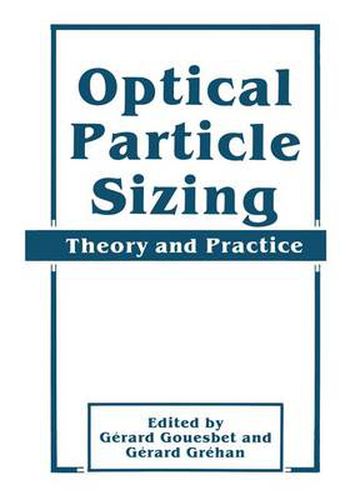Readings Newsletter
Become a Readings Member to make your shopping experience even easier.
Sign in or sign up for free!
You’re not far away from qualifying for FREE standard shipping within Australia
You’ve qualified for FREE standard shipping within Australia
The cart is loading…






This title is printed to order. This book may have been self-published. If so, we cannot guarantee the quality of the content. In the main most books will have gone through the editing process however some may not. We therefore suggest that you be aware of this before ordering this book. If in doubt check either the author or publisher’s details as we are unable to accept any returns unless they are faulty. Please contact us if you have any questions.
Optical particle s1z1ng is undoubtedly a fascinating field of research of the utmost practical importance. In the Universe fluids are nearly everywhere, and when they occur they almost invariably contain particles. Inside our bodies we can take the example of blood transporting a vi tal procession of red and white cells. Around us, we can find various particles in the air we breathe, bubbles in the champagne or the soda we drink, or natural and artificial (polluting!) particles in the lakes we swim in. Industrial processes and systems are also concerned with particles, from pulverized coal flames to fluidized beds, in a range of applications involving rocket exhausts, pneuma tic transport and more generally the infinite realm of mul tiphase situations. Such an obviously vast field would require a whole volume like this one merely to attempt to describe it superficially. To be sure, we would need a scientific Prevert to catalogue such an endless inventory. Finally, even outside our terrestrial spaceship particles can be detected in alien atmospheres or between stars. Theorists will enjoy analyzing the richness of light/particle interact. ion, a subject which is very far from being exhausted. Experimental researchers will love designing and studying various probing instruments with a laser source at the input and a computer at the output, two requisites of today’ s technological revolution.
$9.00 standard shipping within Australia
FREE standard shipping within Australia for orders over $100.00
Express & International shipping calculated at checkout
This title is printed to order. This book may have been self-published. If so, we cannot guarantee the quality of the content. In the main most books will have gone through the editing process however some may not. We therefore suggest that you be aware of this before ordering this book. If in doubt check either the author or publisher’s details as we are unable to accept any returns unless they are faulty. Please contact us if you have any questions.
Optical particle s1z1ng is undoubtedly a fascinating field of research of the utmost practical importance. In the Universe fluids are nearly everywhere, and when they occur they almost invariably contain particles. Inside our bodies we can take the example of blood transporting a vi tal procession of red and white cells. Around us, we can find various particles in the air we breathe, bubbles in the champagne or the soda we drink, or natural and artificial (polluting!) particles in the lakes we swim in. Industrial processes and systems are also concerned with particles, from pulverized coal flames to fluidized beds, in a range of applications involving rocket exhausts, pneuma tic transport and more generally the infinite realm of mul tiphase situations. Such an obviously vast field would require a whole volume like this one merely to attempt to describe it superficially. To be sure, we would need a scientific Prevert to catalogue such an endless inventory. Finally, even outside our terrestrial spaceship particles can be detected in alien atmospheres or between stars. Theorists will enjoy analyzing the richness of light/particle interact. ion, a subject which is very far from being exhausted. Experimental researchers will love designing and studying various probing instruments with a laser source at the input and a computer at the output, two requisites of today’ s technological revolution.